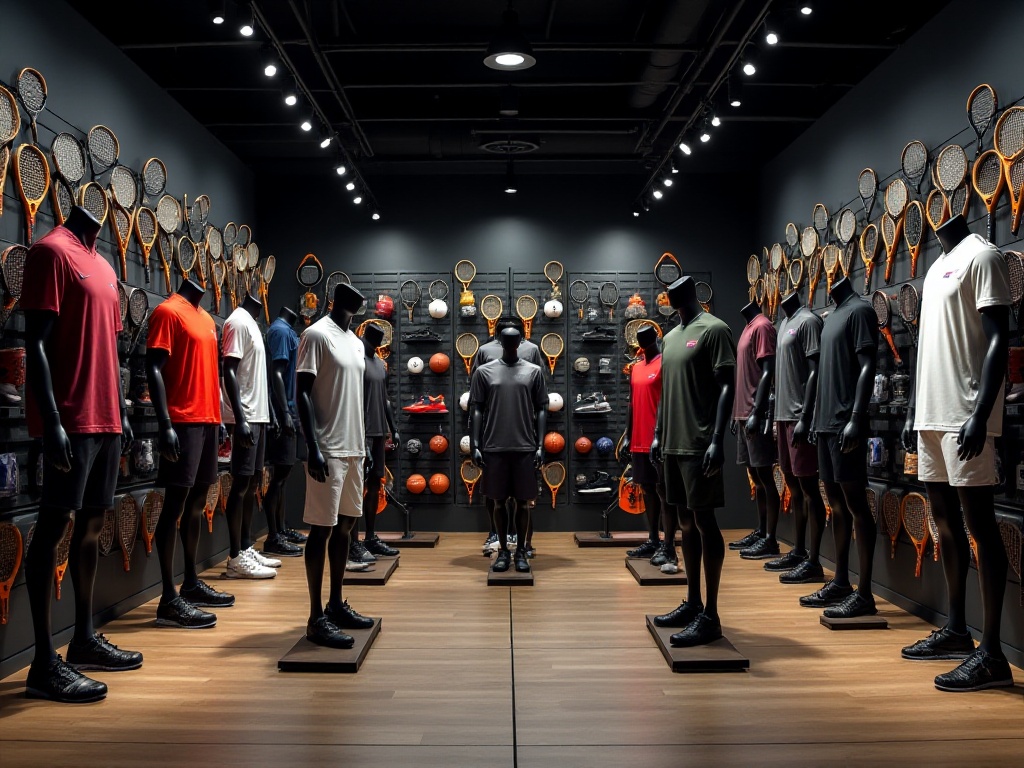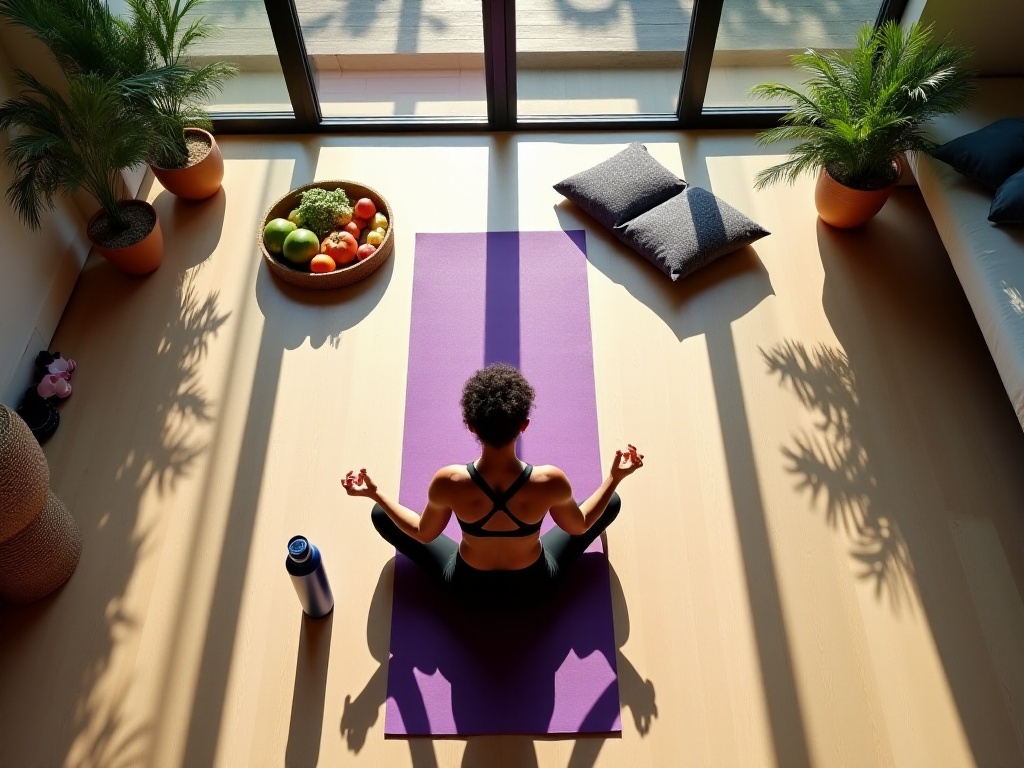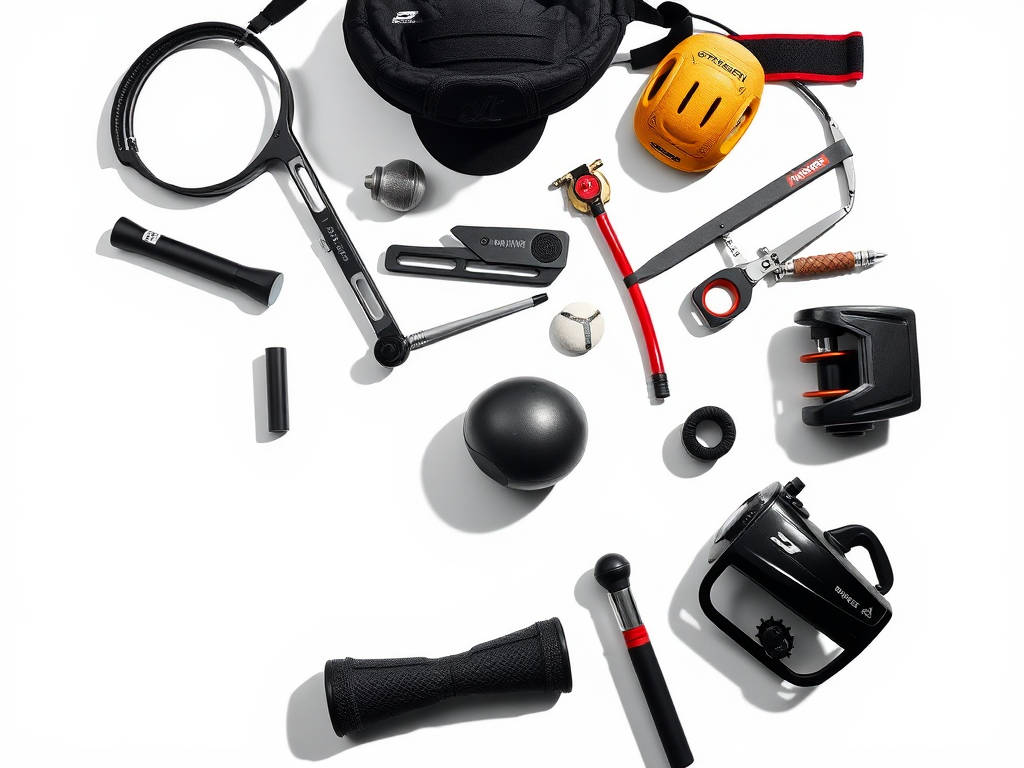Introduction
Today I'd like to discuss how to build a healthy lifestyle from scratch. As someone who has transformed from a couch potato to a fitness enthusiast, I deeply understand beginners' confusion. I remember when I first wanted to change my lifestyle, I felt lost amid the overwhelming information online. I was like a small boat drifting aimlessly in an ocean of information. After countless trials and failures, I finally found my own path to health. Looking back, I could have avoided many detours if someone had pointed me in the right direction. With this in mind, I decided to compile my experiences and lessons into this detailed beginner's guide, hoping to help others who are as confused as I once was.
Diet Revolution
When it comes to healthy living, many people's first thought is "watching what you eat." But did you know? Scientific eating isn't simply about dieting, but about building a sustainable eating system. According to recent nutritional research data, people who consume more than 5 servings of fruits and vegetables daily can reduce their cardiovascular disease risk by 20%. What exactly is "5 servings"? Let me break it down: one serving of fruit is about the size of an apple, and one serving of vegetables is equivalent to a bowl of lettuce salad.
In practice, we can divide daily meals into three main meals plus two snacks. Breakfast can be whole grain bread with pure milk and a piece of fruit; lunch and dinner proportions should be balanced, following the principle of "half vegetables, quarter whole grains, quarter quality protein." This meal structure ensures nutritional balance while allowing you to maintain health while enjoying food.
Nutrition experts recommend daily protein intake should be 1.2-1.6 grams per kilogram of body weight. For a 60kg adult, this means consuming 72-96 grams of protein daily. This protein can come from lean meat, fish, eggs, legumes, and other foods. Notably, the combination of plant and animal proteins is important to ensure complete amino acid profiles.
Have you noticed that many people think healthy eating is complicated? It doesn't have to be. Here's a tip: prepare a 21-compartment storage box, with different ingredients in each compartment, such as brown rice, quinoa, chicken breast, salmon, etc. Just take ingredients from different compartments each day to easily create nutritionally balanced meals.
For ingredient selection, I recommend focusing on seasonal produce. Seasonal ingredients not only have higher nutritional value but are also more affordable. For example, eat asparagus and spinach in spring, tomatoes and cucumbers in summer, pumpkin and carrots in autumn, and cabbage and radishes in winter.
The most important aspect of dietary revolution is establishing correct eating concepts. Weight loss doesn't mean starvation, and healthy eating doesn't mean completely giving up tasty food. Moderate amounts of desserts and snacks are allowed; the key is controlling portions and frequency. For instance, you can enjoy some dark chocolate after exercise to satisfy cravings while replenishing energy.
Hydration is also an essential part of healthy eating. Research shows daily water intake should be between 1.5-2 liters. However, this amount isn't fixed and should be adjusted based on factors like exercise level and climate conditions. A simple test: if your urine is light yellow, hydration is adequate; if dark yellow, you need more water.
In practice, I've found many people are too aggressive when first changing their diet habits, then give up shortly after. Actually, changing eating habits is a gradual process requiring sufficient time for both physical and psychological adaptation. I suggest starting with a small goal, like ensuring you don't skip breakfast every day for the first week, then moving on to the next change once this habit is established.

Getting Started with Exercise
Many friends ask me: "I want to start exercising, but don't know how." Actually, the most important thing about starting exercise isn't choosing what activity to do, but establishing an exercise habit. The World Health Organization recommends at least 150 minutes of moderate-intensity exercise weekly. Sounds like a lot? It's actually just over 20 minutes per day.
Beginners often make the mistake of pursuing high-intensity exercise from the start. This not only increases injury risk but also dampens exercise motivation. The correct approach is to start with low-intensity exercise and gradually increase intensity. A simple way to judge if exercise intensity is appropriate is the "talk test": if you can maintain normal conversation while exercising, the intensity is moderate; if talking is difficult, the intensity is too high.
When I first started exercising, I began with 10-minute walks daily. Once my body adapted, I gradually increased duration and intensity. Current research shows that even three 10-minute exercise segments daily can bring significant health benefits. So don't pressure yourself too much; start with small goals.
When choosing exercise activities, fully consider your interests and conditions. If you live near a park, morning jogging or brisk walking is a good choice; if you have enough space at home, consider purchasing simple fitness equipment like yoga mats or resistance bands; if you enjoy group activities, you can join fitness classes or sports clubs.
Warm-up before exercise and stretching afterward are very important. Warm-up raises body temperature, increases muscle elasticity, and reduces injury risk. Generally, warm-up should last 5-10 minutes, including simple joint movements and low-intensity aerobic exercise. Post-exercise stretching helps restore muscle length, reduce muscle soreness, and improve flexibility.
For beginners, establishing an exercise plan is important. You can start with a 4-week plan: First week focuses mainly on walking, 15-20 minutes daily; second week try intermittent jogging, like walking 3 minutes, running 1 minute; third week add simple strength training like push-ups and squats; fourth week try extending exercise time to 30 minutes.
During exercise, pay special attention to your body's signals. If you feel joint pain, breathing difficulties, or rapid heartbeat, adjust intensity or stop exercising immediately. Also, keeping an exercise journal is a good habit, recording daily exercise time, intensity, and feelings to better monitor your progress.

Equipment Selection
Regarding exercise equipment, my advice is: get what's sufficient, don't pursue luxury. However, several basic pieces of equipment are worth investing in:
Athletic shoes: These are your important exercise companions. Proper athletic shoes not only prevent exercise injuries but also improve exercise efficiency. Research shows correct athletic shoes can reduce exercise injury risk by about 15%. When choosing athletic shoes, note the following: First, choose shoes specific to your exercise type, like running shoes or training shoes; second, consider your foot type, as flat feet and high arches need different types of shoes; finally, pay attention to shoe size, preferably trying shoes in the evening when feet are slightly swollen, closer to their state during exercise.
Exercise clothing: Choose breathable, sweat-wicking fabrics. Many sports clothes advertise special functions, but comfort is most important. I suggest beginners start with basic styles and buy specialized gear once they've settled on specific activities. Choose clothing based on season and exercise intensity. Select light, breathable fabrics for summer and focus on warmth for winter. Additionally, sports bras are essential for women, with support level chosen based on exercise intensity.
Besides basic equipment, some auxiliary tools can help us exercise better. For example, pedometers or smart bands can help record exercise data; yoga mats can be used for stretching and strength training; foam rollers can help with muscle relaxation and recovery. These aren't necessities, but consider gradually adding them if budget allows.
Maintaining exercise equipment is also important. Athletic shoes need regular cleaning and drying; exercise clothes need prompt washing to avoid bacterial growth; equipment needs regular checking for damage to ensure safe use. Good equipment maintenance not only extends service life but also ensures exercise effectiveness.

Schedule Adjustment
Did you know? According to sleep research institutions, over 60% of young Chinese people have sleep problems. Good sleep patterns are the foundation of healthy living. My personal experience is: fixed wake-up time is more important than fixed bedtime.
Why? Because a fixed wake-up time helps establish stable biological rhythms. When we wake up at the same time daily, our body naturally adjusts its sleep cycle, feeling sleepy at appropriate times in the evening. This is easier to achieve than forcing yourself to sleep at a fixed time.
I now maintain a 6 AM wake-up habit, allowing me to enjoy my exercise time before the day begins. It was painful at first, but became natural after three weeks. Research shows it takes an average of 66 days to form a new habit, so be patient with yourself.
Good sleep quality is crucial for health. Here are some suggestions for improving sleep quality: First, create a good sleep environment, keeping the room quiet, dark, and at suitable temperature; second, establish bedtime rituals, like taking a hot bath, reading, or doing gentle stretches; finally, control electronic device use, preferably avoiding phones and computers one hour before bed.
Schedule adjustment isn't just about sleep timing, but also meal timing. Maintain regular meal times, with breakfast within an hour of waking, 4-5 hours between lunch and dinner, and dinner ideally 3 hours before bed. This schedule allows for smoother metabolism.
The difference between workday and weekend schedules is a common issue. While sleeping in on weekends feels good, it disrupts biological rhythms. Try to keep weekend wake-up times within an hour of usual time to maintain schedule stability. If tired, consider a 30-minute afternoon nap, but don't exceed this time to avoid affecting night sleep.

Practical Advice
To truly establish a healthy lifestyle, gradual progress is key. Here's how I suggest starting:
Week one focuses on adjusting sleep patterns, ensuring 7 hours of sleep daily. This is the most basic and important step. Start by adjusting wake-up time, setting and strictly following a fixed time. Also, observe sleep quality, recording sleep time and how you feel upon waking.
Week two adds 10 minutes of morning walks while maintaining fixed sleep schedule. Morning walks help wake the body and provide energy for the day. Walk around your neighborhood or park. Focus on forming the habit rather than distance or speed.
Week three starts focusing on diet, beginning with drinking 8 glasses of water daily. Prepare a large water bottle marked with time points to remind yourself to hydrate regularly. Also start recording daily food intake to understand your eating patterns.
Week four tries eating 5 servings of fruits and vegetables daily. This requires preparation, like buying fresh produce and learning simple cooking methods. Cut fruit and store in containers for easy access; prepare ready-to-eat vegetables like carrot sticks and cucumber slices.
During implementation, note the following: First, be patient as change takes time; second, be flexible and adjust goals if they're too challenging; finally, reward yourself when reaching milestones, perhaps with new exercise equipment or trying a healthy restaurant.
Recording and reviewing progress is also important. Use phone apps or paper diaries to record daily progress, including exercise time, diet, sleep quality, etc. Regular review helps identify and adjust problems promptly.

Final Words
Healthy living isn't a sprint but a marathon. You don't need perfection, but consistent progress. You'll face various setbacks and difficulties, like work interrupting exercise plans or social events disrupting diet control. This is normal; the important thing is adjusting your mindset and getting back on track.
Remember, today's you is already slightly better than yesterday's. Every small change deserves recognition, every step leads you toward a healthier life. Healthy living is an ongoing process requiring continuous learning and adjustment. During this process, learn to listen to your body and find what works best for you.
Feel free to share any confusion or questions in the comments. After all, everyone's health journey is unique, and we can encourage and support each other along the way. Let's look forward to looking back in a few months and seeing how far we've come.
Healthy living isn't just about better physical health, but about a better quality of life. When we have healthy bodies, we can pursue our dreams and enjoy life's beauty with more energy. So don't hesitate, take your first step toward healthy living today!
Related articles




